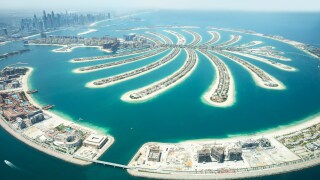On January 12 2010, a 7.0 magnitude earthquake struck Port au Prince, Haiti, killing up to 230,000 people and destroying the nation’s domestic telecoms infrastructure and the landing point for Haiti’s only operational submarine cable.
After five months of negotiations, the International Finance Corporation (IFC), a subsidiary of the World Bank, has successfully advised and moderated a deal in which Vietnamese operator Viettel will invest $99 million to take a 60% stake in new operator Natcom. Viettel has been in the country since May, providing aid and equipment and rolling out infrastructure ahead of schedule. Private mobile operators Digicel and Comcel took weeks to restore their services after the earthquake, so Telecoms Sans Frontieres and the US Federal Communications Commission (FCC) assisted telecoms needs in Haiti, addressing the immediate after effects of the disaster.
Prior to January 2010, there were approximately 100,000 fixed-line subscribers in Haiti; a mobile penetration of 37%, amounting to 3.2 million subscribers; and an internet penetration of 1%. It is impossible to provide information on the status of the telecoms sector in the country today, but Rostan Schwab, IFC investment officer, privatisation projects Latin America and the Caribbean, doubts that penetration is much lower now than it was before the earthquake. He outlines the IFC’s commitment to ensuring that Viettel answers issues and gaps in the telecoms sector that Haiti was experiencing before and after the quake. “What is really important for the government of Haiti is the creation of the fibre-optic infrastructure nationwide. This is being built right now by Viettel,” says Schwab. “Our role at the IFC is to advise the investor on what needs to be done and ensure they provide the best service possible. We negotiated with the government for a telecoms licence which was granted. Viettel needed to roll out up to 600Mbps of fibre-optic. They are doing three times this. Initially we were surprised by their ambitions, but this has the potential to be the biggest telecoms network in Haiti, based on a fibre-optic nationwide backbone.”
Schwab adds: “Since 2006, the IFC has supported Haiti’s operator Digicel in rolling out its network. Digicel has a market share towards 70%. We have seen an interesting evolution in Haiti over the past 10 years from a public monopoly to competition, but liberalising the private sector could effectively create a private monopoly. The biggest fear for the IFC and the World Bank, especially in Asia and Africa, is the creation of a dominant private sector operator that is not interested to move that extra mile in terms of penetration, especially to reach lower income groups in dark areas and rural sectors.”
Landlocked countries and islands are markets in need of further telecoms investment from the IFC because of poor international connectivity, according to Schwab. He believes the World Bank group is aiming to address investment in low-income countries with low penetration, underdeveloped markets and a structural weakness in the legal and regulatory frameworks of their telecoms sector. But the IFC is a profit organisation, and “we, like any investor, consider the ability for us to make a return on our investment”.
He says: “We have a mandate that requires us to go into the areas where we are most needed, but we can only invest if we believe we can achieve a good return on our equity or we believe the use of our loan is correct. We look at the development impact, meaning what our investment will lead to in the wider market. Before investing, we would estimate the increase in telecoms penetration, the potential for decrease in tariffs, the potential for more jobs and indirect benefits to the telecoms sector, such as the introduction of call centres.”
Most recently, the IFC has provided financial initiative and technical support to the East Africa Submarine Cable System (Eassy) and in 2007 it provided a $320 million loan package to Zain, formerly known as Celtel, to develop its network in Madagascar, Malawi, Sierra Leone, Democratic Republic of Congo and Uganda. Bharti Airtel confirmed its acquisition of Zain’s assets in these five regions in June 2010, in addition to 10 other Zain assets throughout Africa, for approximately $10.7 billion. The Indian operator is now accountable for the IFC loan.
In central Africa, the World Bank and the African Development Bank have invested $215 million in its Central African Backbone (CAB) initiative over 10 years to develop a fibre-optic telecoms backbone infrastructure to increase the availability of high-speed internet access and reduce prices.
“The IFC’s $320 million loan to Zain was very interesting considering the company was making reasonable profits in most of its 15 African operations at the time,” says Peter Lange, senior Africa analyst at Buddecomm. “One would have thought they could have developed their networks without help from the IFC. The CAB initiative aims to raise $98 million from the private sector, with an initial $26 million invested in Cameroon, the Central African Republic and Chad. The latter two are very poor, landlocked, and a black hole in terms of fibre connectivity.”




